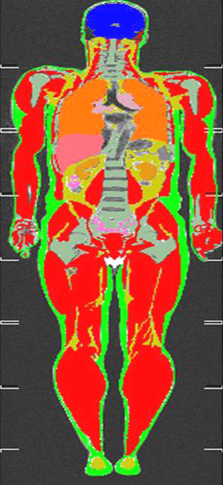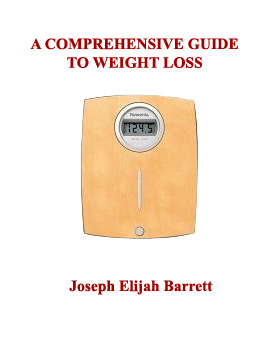| Back to Back Issues Page | ||||
 |
||||
|
Your Health & Wellness, Iss #018 -- That thin person you envy may be unhealthy too November 15, 2007 |
||||
(Guide to a Healthy Lifestyle) If you like this ezine, please do a friend and me a favor and pass it along. If a friend DID forward this to you and if you like what you read, please subscribe by visiting subscribe Week of November 18, 2007 Table of Contents * Being Thin Is Not The Same As Being Healthy *
Being Thin Is Not The Same As Being Healthy In this world of rampant overweight and obesity, it is easy to see why many people desire to be thin. Obesity is simply unhealthy. It has been linked to heart disease, diabetes, high blood pressure (hypertension), sleep apnea, and some forms of cancer.
In response to the ever-growing market for weight loss programs and products, diet plans are coming out of the woodwork. All promise to deliver a new you in the form of a thinner you.
Popular diet plans currently making the rounds on stations such as CNN are NutriSystem and Jenny Craig. The spokesperson for NutriSystem is the former NFL (National Football League) coach Don Shula. A more light-hearted approach is taken by Jenny Craig spokesperson Kristie Alley. And now there is a 'friendly' competition between Kristie and newcomer, Valerie Bertinelli.
NutriSystem and Jenny Craig, as well as the dozens of other diet plans floating around, are big business. I am not ridiculing big business, but let's face it, big business is in business to make money. If it is not in big business's interest to mention something which might affect the consumer's decision to purchase a diet plan, they won't mention it.
For instance, almost none of the nationally advertised diet plans mention anything about exercise. This is despite the fact that studies have shown, and many health professionals and obesity experts agree, diets just don't work!
Any diet plan will bring about short-term weight loss. The problem is that the weight loss is not sustainable-it fails in the long-term. Dieters will invariably, with the exception of a very small percentage, not only return to their pre-diet weight, but pack on additional fat weight as well.
Not only do diets fail in long-term weight loss, but their paid spokespersons would have you believe that being thin is the same as being healthy. They don't come right out and say it, but it's implied. Nothing could be further from the truth. A person can be thin and obese (read 'unhealthy') at the same time.
Dr. Bell's imaging studies have revealed amazing results. 45 percent of the women who participated in his study with BMIs ranging from 20 to 25 had excessive amounts of internal fat. 60 percent of the men in the study with normal BMIs had enormous amounts of internal fat.
Dr. Jimmy Bell's studies have shown that anyone who maintains their weight through diet without the benefit of exercise are likely to have serious deposits of internal fat even if they appear thin. Conversely, fat people who exercise can be healthier than a sedentary thin person.
At the gym where I lift weights, there are some members who you would consider overweight. However they are a lot healthier than their thin non-exercising counterparts. Just like you can't judge a book by its cover, you can't necessarily judge a person by his appearance.
"Despite their ripples of fat, super-sized Sumo wrestlers probably have a better metabolic profile than some of their slim, sedentary spectators. That's because the wrestlers' fat is primarily stored under the skin, not streaking throughout their vital organs and muscles" (Dr. Jimmy Bell.)
Fat can be stored in two different locations. Fat which is stored under the skin is called 'subcutaneous' fat. Fat that is stored internally, around organs, is known as visceral fat.
While subcutaneous fat is unsightly, it is not as dangerous as visceral fat. The bulging belly and love handles on men is subcutaneous fat. The fat located on the back of women's upper arms, and on their hips and thighs, is subcutaneous fat.
However, medical science has discovered that visceral fat is the greater danger. This fat is completely invisible to the eye. A person doesn't have to be overweight or obese to have visceral fat.
Visceral fat surrounds internal organs such as the liver and pancreas. People with visceral fat are at an increased risk of diabetes and heart disease. Researchers think that visceral fat somehow interrupts hormonal communications, and tells the body to store fat inside the liver or pancreas.
Dr. Louis Teichholz, chief of cardiology at Hackensack University Medical Center in New Jersey says, "...just because someone is lean doesn't make them immune to diabetes or other risk factors for heart disease."
Losing weight involves more than just watching numbers on a bathroom scale. What good is it to lose 100 pounds, and have an increased risk of heart disease or diabetes? "Even if you don't see it on your bathroom scale, caloric restriction and physical exercise have an aggressive effect on visceral fat" (Dr. Bob Ross, obesity expert at Queen's University in Canada.)
Note the above image. It is a MRI of a man who is 6'-2" tall and weights 174 pounds. His BMI (body mass index) is normal at 21.7. Yet he has dangerous visceral (internal) fat surrounding his organs. He is thin but bordering on obesity.
Successful, healthy, and long-term weight loss involves a change in lifestyle-not hopping from one diet to another hoping to find one that works. This means that just restricting food intake is not enough. “If you just want to look thin, then maybe dieting is enough,” Bell said. “But if you want to actually be healthy, then exercise has to be an important component of your lifestyle.”
Exercise is the only way to combat visceral fat. And it must be an integral part of any weight loss effort. LIVING A GOD-GLORIFYING LIFE THROUGH GOOD HEALTH. Get the e-book A Comprehensive Guide to Weight Loss FREE with this purchase. Limited time offer! (Featured on CNN) ISBN:1-5988690-8-6. 226 pages; Price: $14.99 This is not a diet book. As a matter of fact, diets just don't work. What does work is an effective strategy that works with the body.
Stop running into a brick wall in your effort to lose weight. I remove all the gimmicks in order for you to remove those excess inches.
----------------------------------------------------------------- "...I am about half way done voicing your book. I am already eating differently. I've totally cut out any white breads and rice. I am working on eating more organic food..." L. Lett Mustang, OK "...You do a brilliant job of incorporating general health with spiritual health. You utilize interesting statistics and intriguing concepts that breed a new outlook on food, energy and nutrition to any reader. Our bodies truly are temples and it is important to keep them sacred in God's eyes. I love how your book approaches this concept. This book really does deliver as you expect it to from the title and was a great read..." T. Tate Mustang, OK "I got the book day before yesterday and have definitely been reading it. It is awesome!...I want to buy some copies for some people I know..." M. Rodgers Bakersfield, CA "I appreciate the book and will be implementing its contents into my daily walk...Thanks so much for going through the trouble of compiling this book and all of its wholesomeness. I'm looking forward to hearing you teach this one day live" D. Tripp NJ ----------------------------------------------------------------- Get FREE Weight Loss Guide E-Book with purchase of Living A God-Glorifying Life Through Health. A $27.95 VALUE!
The obesity crisis is global. Almost every nation is struggling with a population which is growing larger by the year.
Unfortunately this trend doesn’t seem to be slowing down, let alone decreasing. The percentage of Americans overweight in 1960 was 45 percent; in that same year, 13 percent were obese.
Fast forward to the 21st century. America’s overweight percentage is now 66 percent while approximately 33 percent are obese.
Obesity is a crisis because with rising body weight comes rising risk factors for chronic disease, and the development of disease itself. Certain cancers, heart disease, and even seemingly unlikely medical conditions such as asthma, sleep apnea, and erectile dysfunction are directly or indirectly related to obesity.
Another name for type 2 diabetes is adult-onset diabetes. That’s because it used to affect mostly adults. Not any more. Rising obesity rates are afflicting children with this terrible disease. Overweight and obesity is expensive. It costs America about $123 billion per year. The average medical costs for an obese patient is approximately 25 to 35 percent greater than for a non-obese patient!
Childhood obesity statistics for America are appalling. Look at the data from the mid 1970s to 2003-2004: Age Range Mid-1970s 2003-2004: 2 thru 5 5% 14% 6 thru 11 7% 19% 12 thru 19 5% 17%
Obesity rates in the 2 through 5 year old and 6 through 11 year old categories almost tripled! They more than tripled in the 12 through 19 year old group!
The global obesity crisis is causing people worldwide to change their lifestyles. Resorting to diets is a bandaide. Only a healthy lifestyle can cure obesity.
In this e-book you will find why diets fail. You will discover that only by a change in lifestyle can you enjoy good health through permanent weight reduction.
You will also discover how America and the world reached this point. There is a reason for everything. After reading the reasons for our global obesity epidemic, you will better understand and appreciate the ‘cure.’
Obesity was not inevitable. It was however inevitable when food companies relied more and more on chemicals, and excessive processing.
But the global obesity crisis is a two-pronged problem. Along with food companies tinkering with food products, technology has given the world population more gadgets to distract us from physical activity. We have become excessively sedentary. We’re obsessed with text messaging and talking on cell phones, watching 24/7 cable/satellite television, surfing the web, and playing countless hours of video games.
There’s no more time to exercise. Stairs have become little more than ‘window dressing’ since hardly anyone uses them anymore. The automobile has become our major means of transportation–relegating walking to situations where it cannot be avoided.
A Comprehensive Guide to Weight Loss will show you what food ingredients and chemicals to avoid. These ingredients and chemicals not only will make you fat, but they negatively affect overall health. You will learn that exercise is a remedy for not only obesity, but chronic diseases such as cancer and heart disease.
Prepare to read and digest the enclosed obesity destroying material in these pages. Also prepare to feel and look as you have possibly never felt and looked before. Let the journey begin... TABLE OF CONTENTS (of FREE E-book)
1 Chapter One Why Can’t I Lose Weight? 9 Chapter Two Drop Pounds by Changing Lifestyle 14 Chapter Three The Weight Crisis 24 Chapter Four Nutrition Makeover 43 Chapter Five Exercise to Lose Weight
I hope that the information contained in this ezine was helpful. If you have any questions or comments concerning this week's topic(s), please go here... Until next week... |
||||
| Back to Back Issues Page |
 "Being thin doesn't automatically mean you're not fat" says Dr. Jimmy Bell, professor of molecular imaging at Imperial College, London. Dr. Bell and his team have been using MRI (magnetic resonance imaging) on about 800 participants since 1994. This type of scanning creates 'fat' maps which show where fat is stored in the body. (See image right; internal or visceral fat is yellow, external or subcutaneous fat is green, muscle is red.)
"Being thin doesn't automatically mean you're not fat" says Dr. Jimmy Bell, professor of molecular imaging at Imperial College, London. Dr. Bell and his team have been using MRI (magnetic resonance imaging) on about 800 participants since 1994. This type of scanning creates 'fat' maps which show where fat is stored in the body. (See image right; internal or visceral fat is yellow, external or subcutaneous fat is green, muscle is red.)


